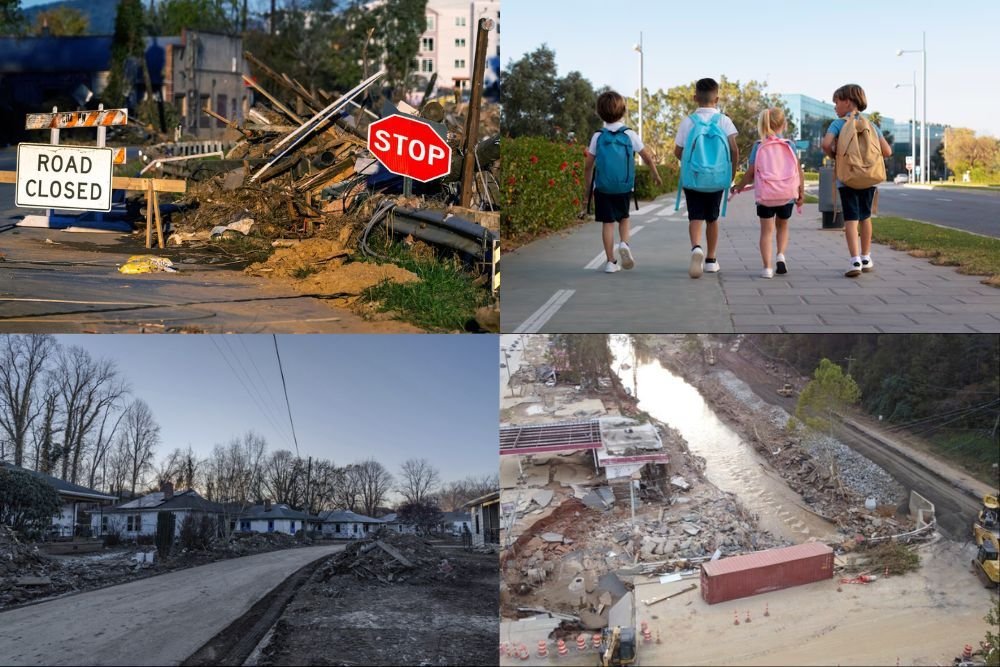After Hurricane Helene, Many North Carolina Students Never Made It Back to School
SWANNANOA, N.C. — A year after Hurricane Helene devastated western North Carolina, some children have yet to return to school as families continue to grapple with housing instability, displacement, and the lingering trauma of the storm.
Displacement Still Shapes Daily Life
When 12-year-old Natalie Briggs revisited her ruined Swannanoa home, she had to cross a wooden beam just to reach her former bedroom. For months she lived in her grandparents’ basement, often overwhelmed by panic attacks at school when reminded of what she’d lost.
She is one of more than 2,500 students identified as homeless across the state directly because of Helene. In some counties, the number of homeless students doubled; in Yancey County, it quadrupled.
Families Struggle for Stability
Families like that of Bonnie Christine Goggins-Jones, a school bus aide, were forced to abandon belongings after Helene flooded their rental home in Black Mountain. They cycled through motels and campers before finding stable housing.
In another case, 11-year-old America Sanchez Chavez and her family were split up after their trailer was destroyed. Despite federal aid, repairs were unaffordable, forcing them into temporary hotel rooms. America says she still feels afraid when heavy rains come.
Education Interrupted
The storm damaged more than 73,000 homes, cut power and water for weeks, and forced schools to close for long stretches. Some children enrolled temporarily in schools outside the region; others never returned at all.
In rural Yancey County, students missed more than two months of school last year, adding to the disruption. Nationally, disaster-driven student homelessness is increasingly common — from Puerto Rico after Hurricane Maria to Hawaiʻi after the 2023 Maui wildfires.
Federal Aid Often Falls Short
Districts can apply for support through the McKinney-Vento Homeless Assistance Act, which funds tutoring and transportation for displaced students. But applications are competitive, and only 1 in 5 U.S. districts typically receive funding. In North Carolina, just six of the 16 counties most impacted by Helene secured assistance.
Advocates warn that without consistent resources, many displaced students will continue to fall behind academically and emotionally.
The story of Helene’s youngest survivors underscores how disasters linger long after debris is cleared. Do you believe federal disaster aid should prioritize displaced students more directly? Share your views with us at SaludaStandard-Sentinel.com.







